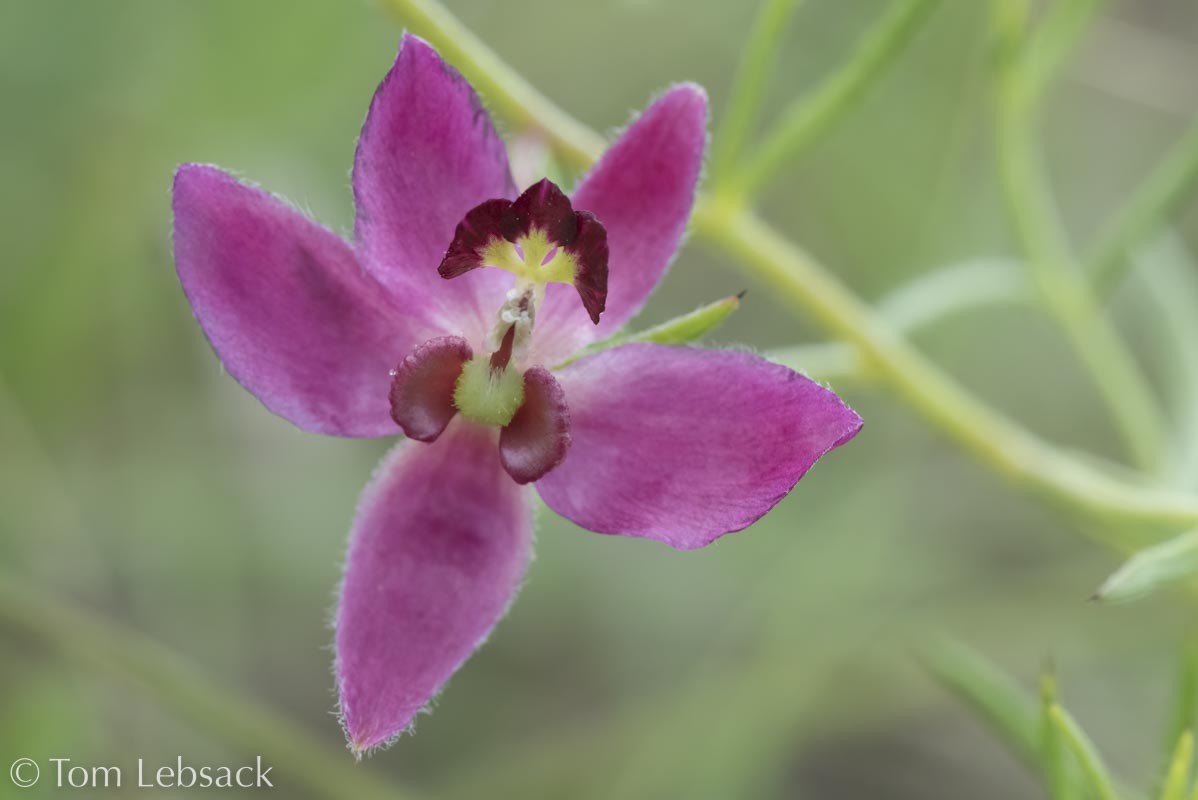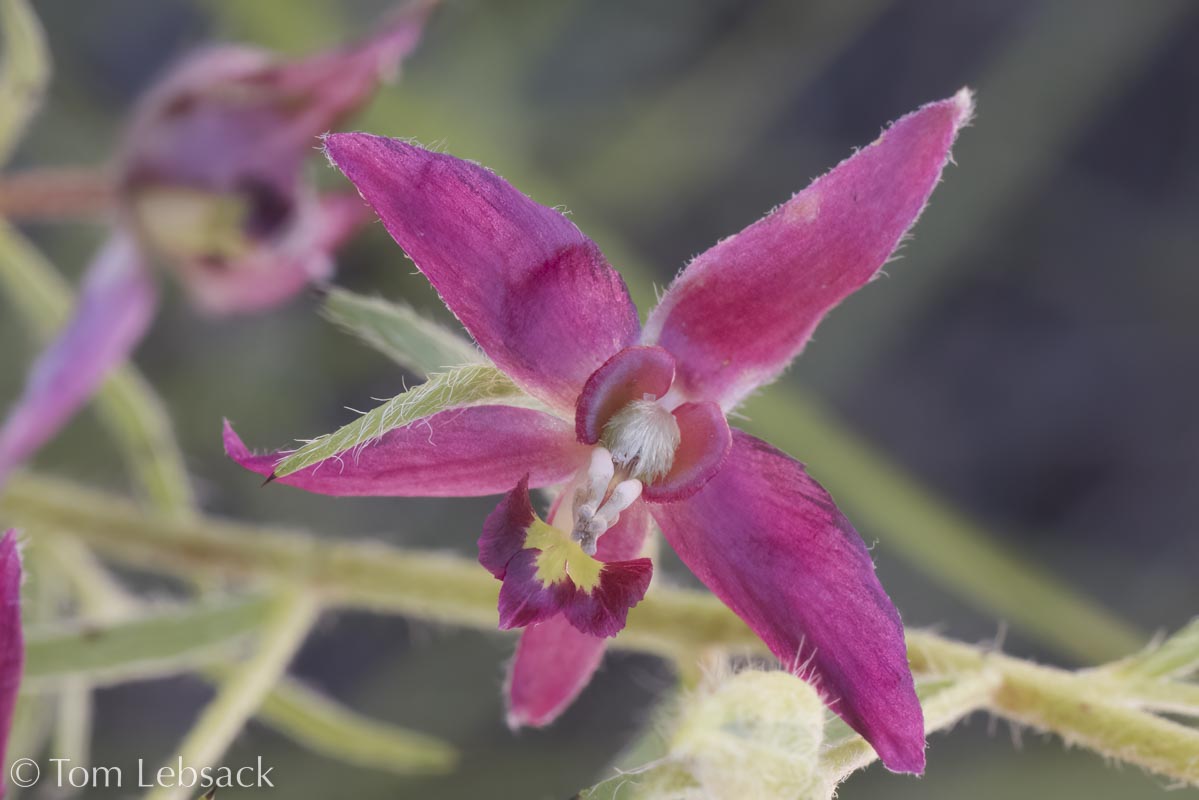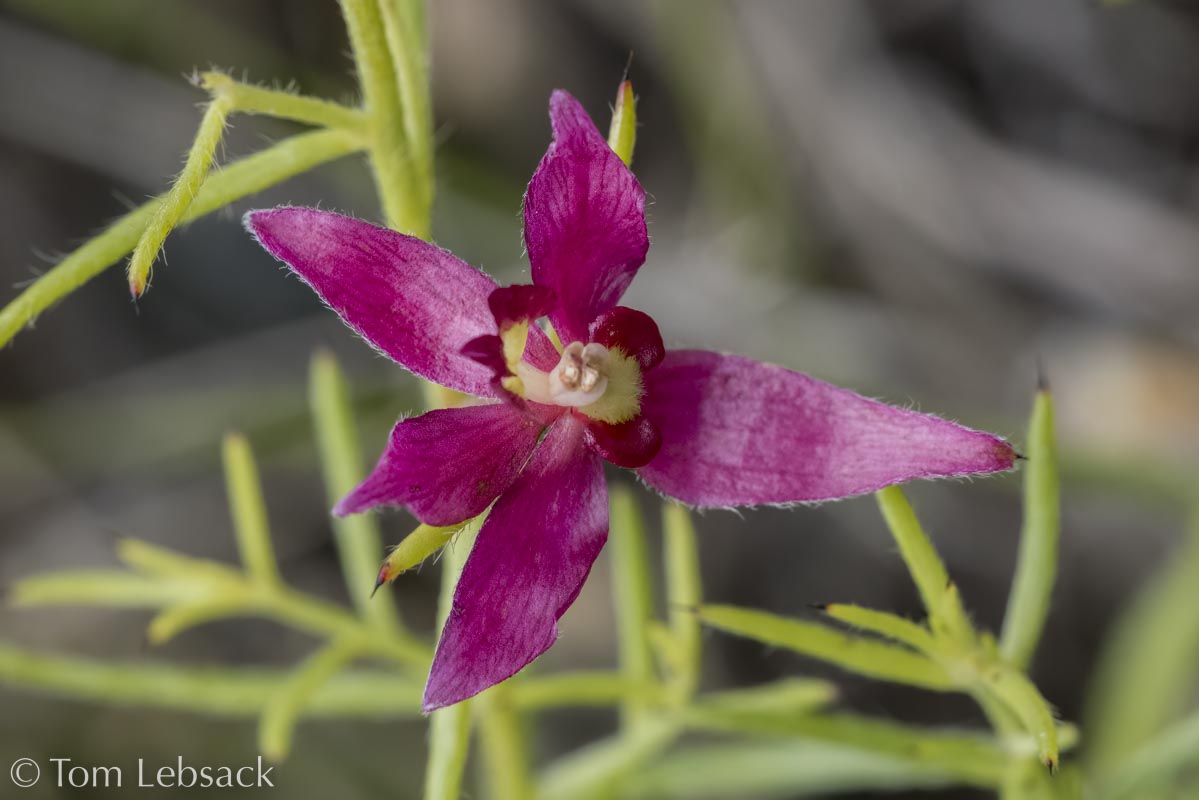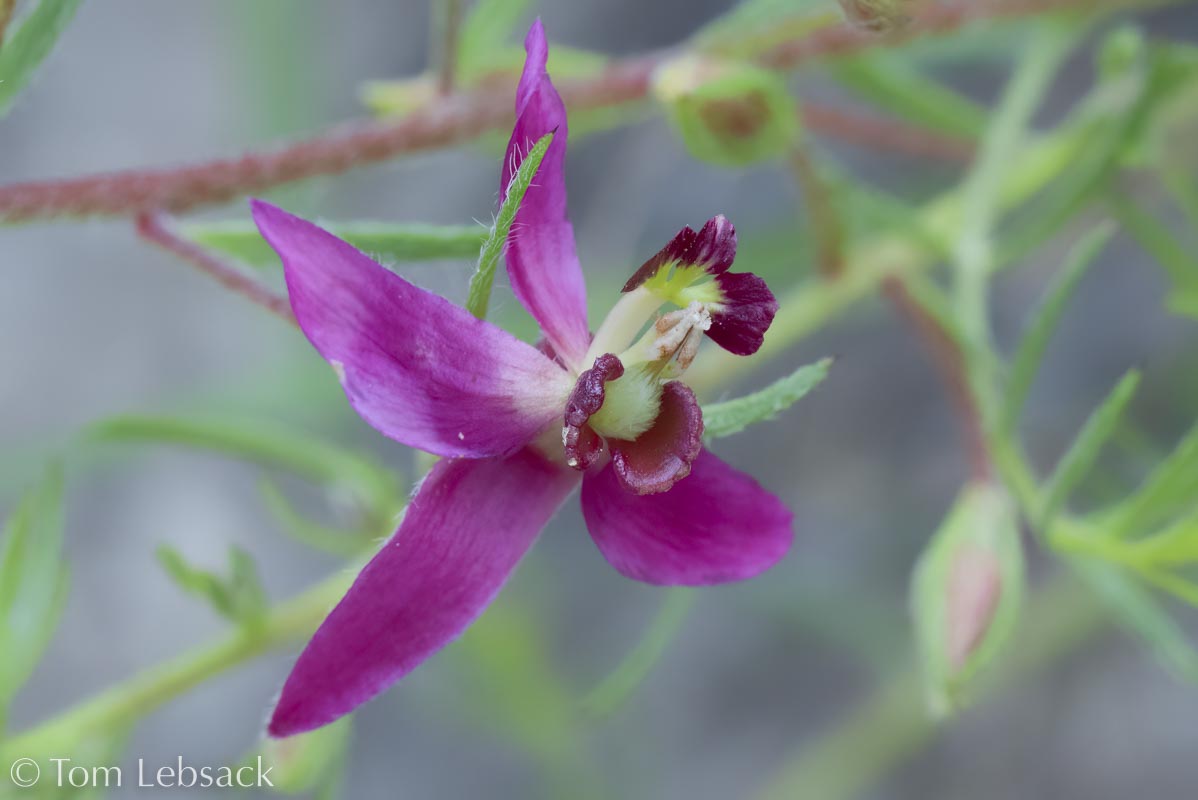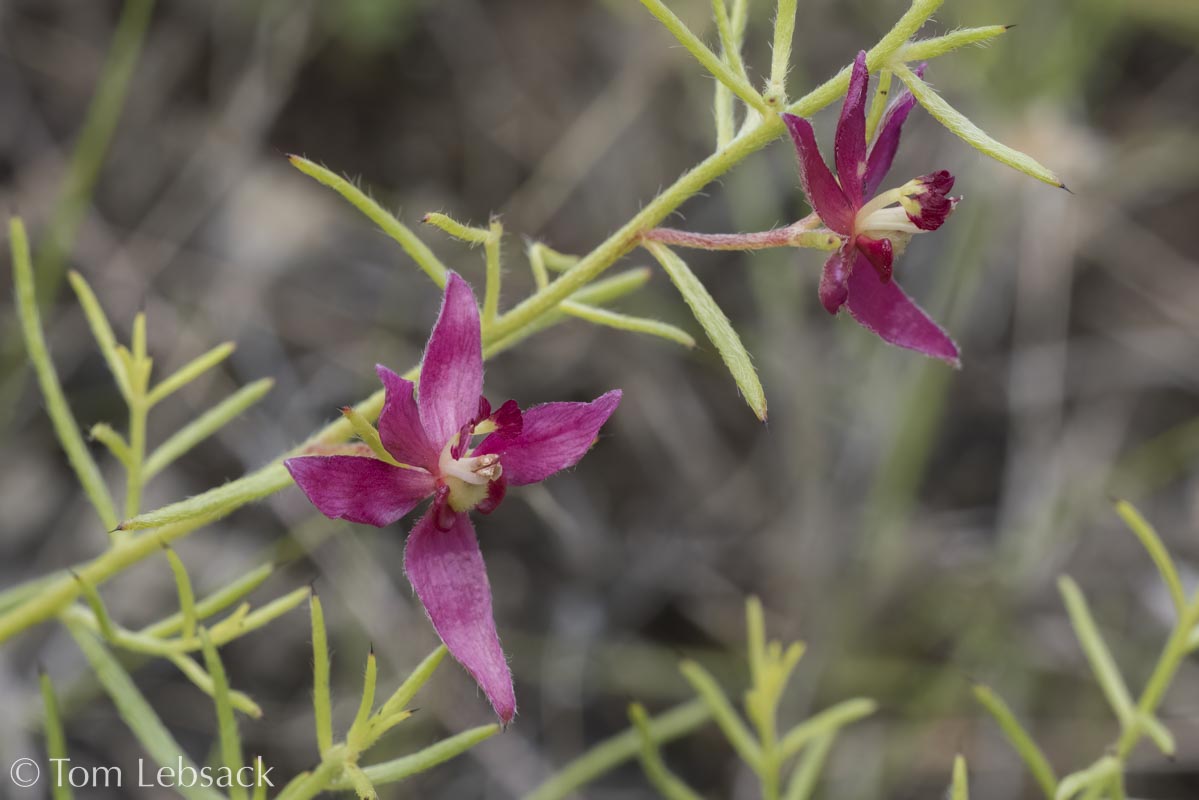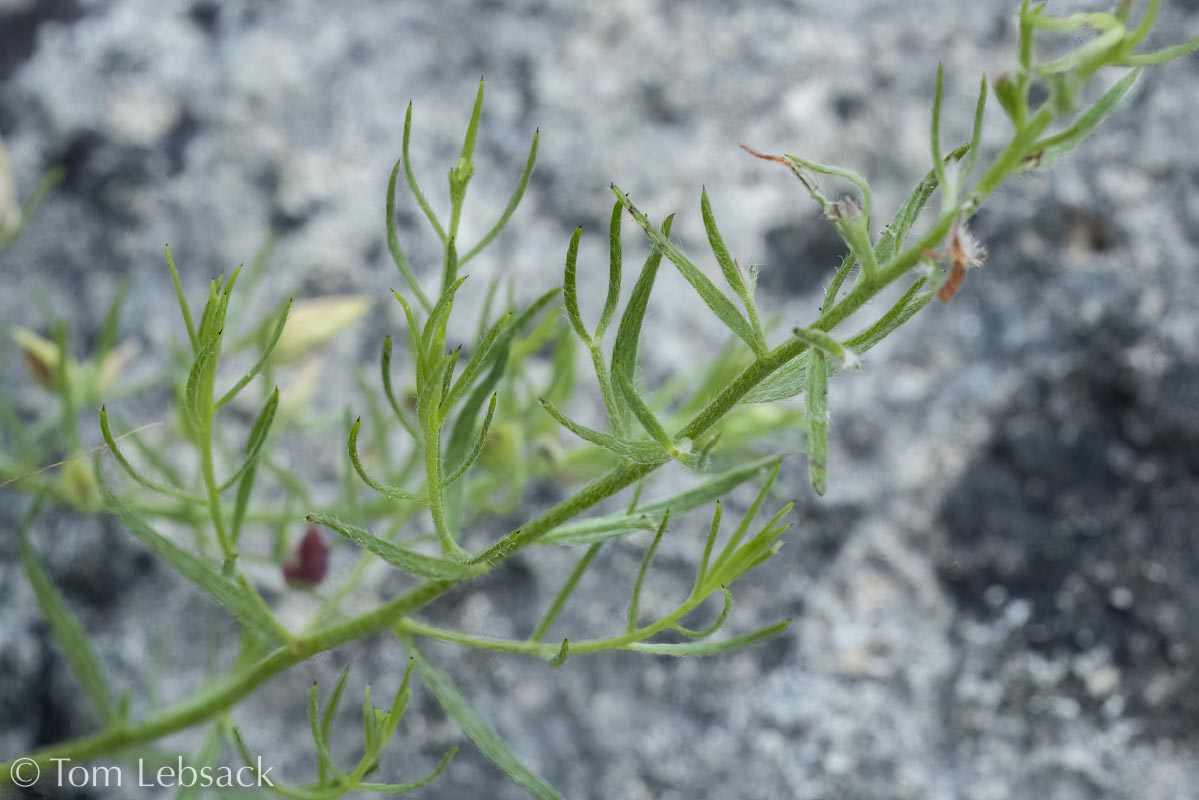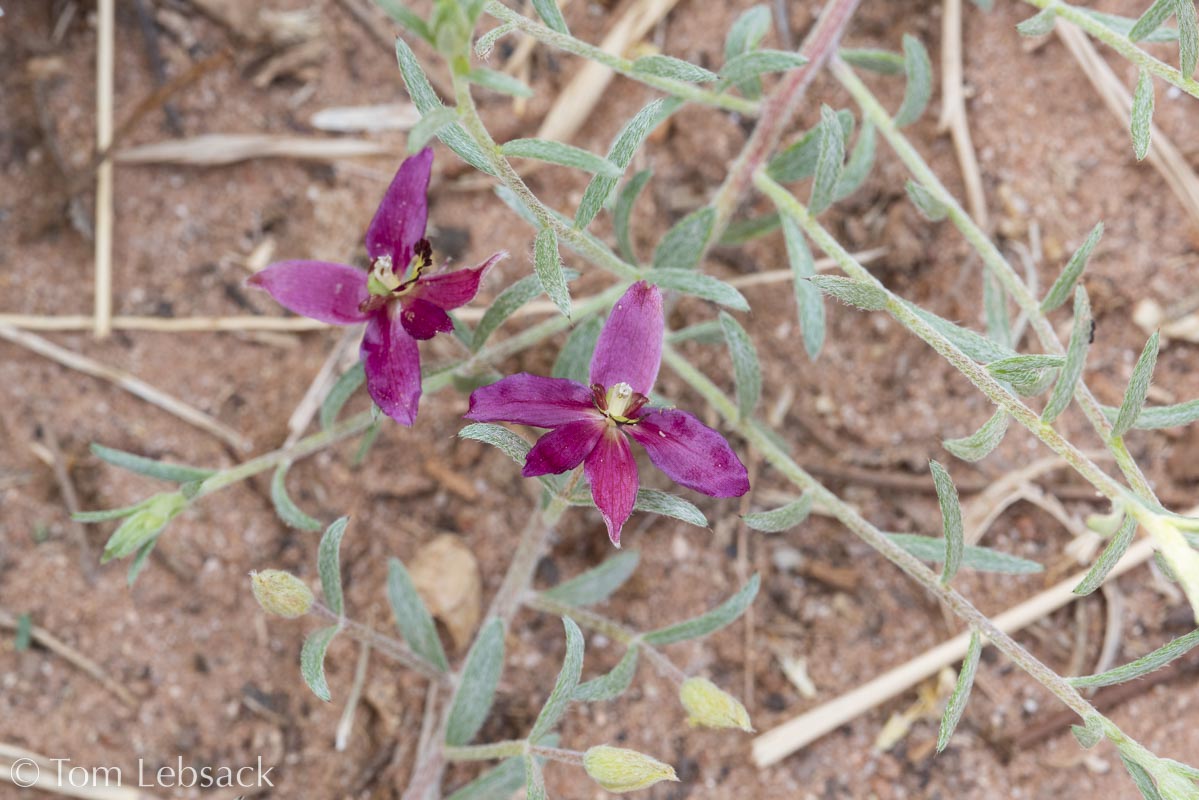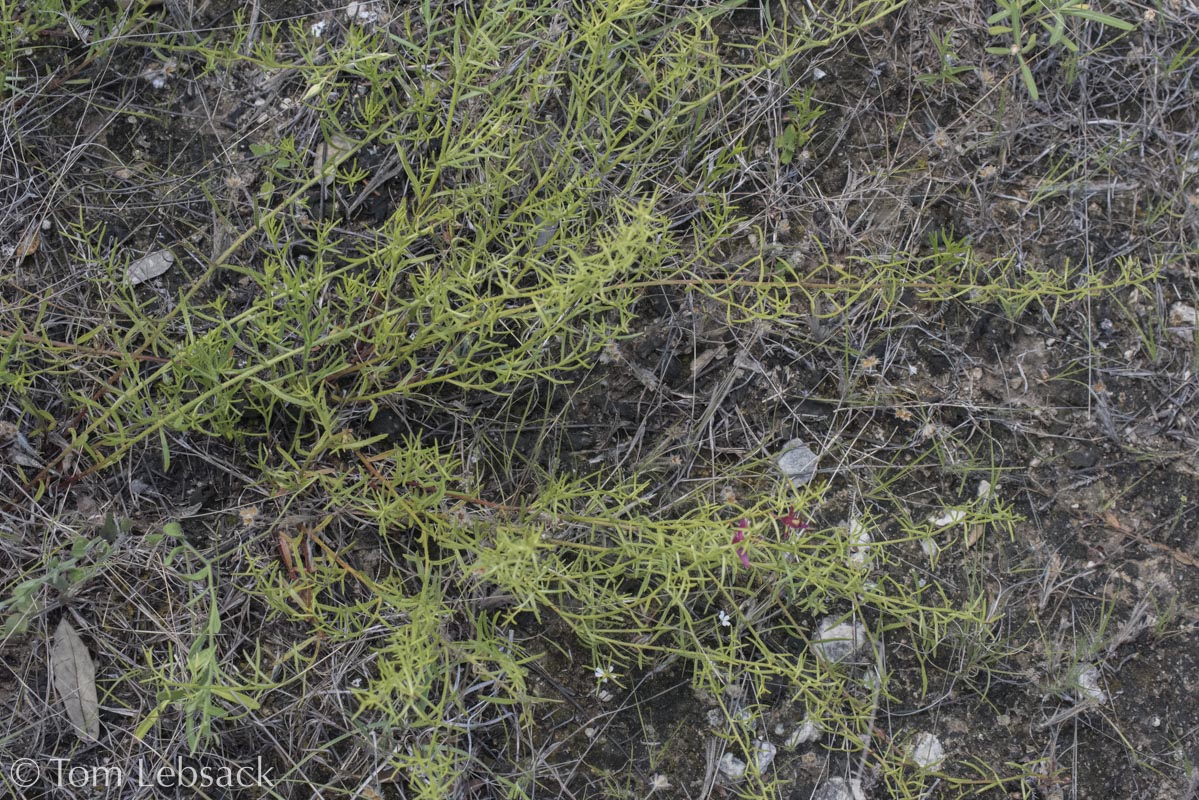Texas Wildbuds
Krameria lanceolata
(Trailing Ratany)
| Scientific Name | Krameria lanceolata | USDA PLANTS Symbol | KRLA |
| Common Name | Trailing Ratany, Trailing Krameria | ITIS Taxonomic Serial No. | 26754 |
| Family | Krameriaceae (Krameria) | SEINet Reference |
Click Here |
| Description | Habitat: Rocky, gravelly or sandy soils; dry rocky prairie hillsides, ravines, and roadsides. Plant: Low perennial with multiple, trailing, hairy stems from a central root, each up to 40 inches long. Leaves: Alternate, linear to elliptic, 1/5 to 4/5 inch long; surfaces silky-hairy; pointed tips. Inflorescence: Single flowers borne at leaf nodes on stalks 1/5 to 1-1/4 inches long; each flower about 1/2-inch across with 5 small petals and 5 conspicuous reflexed (bent back), petal-like, point-tipped, magenta sepals; petals are divided into 3 flag petals (yellow-green with reddish tips) and two others around the ovary. Fruit: Ball-shaped 1/4 to 1/3 inch diamter, covered in woolly hairs with sharp prickles. Bloom Period: April to June. Reference: Kansas Wildflowers and Grasses and "Wildflowers of the Texas Hill Country" by Marshall Enquist. |
BONAP Distribution Map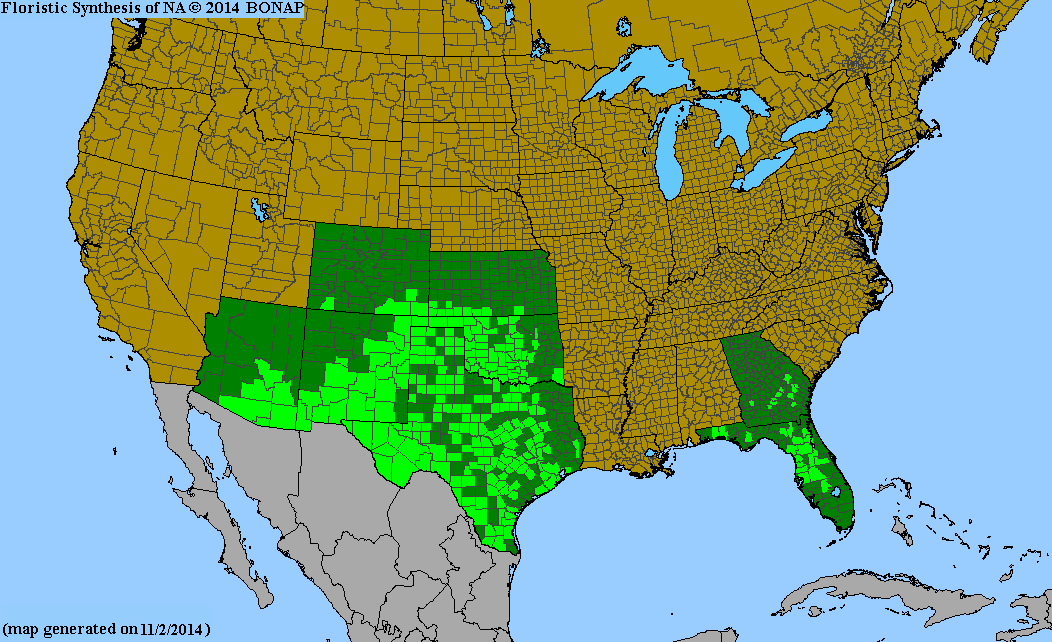 Map Color Key Map Color Key |
Texas Status: Native |
Banner photo of Castilleja indivisa and Lupinus ssp. taken along FM 1323 north of Johnson City, Blanco County
© Tom Lebsack 2025
Every attempt is made to provide accurate, up-to-date, and relevant information, but the completeness or accuracy of any information presented on this website cannot be guaranteed. I use authoritative references to insure high standards of accuracy and review and update the information frequently.
